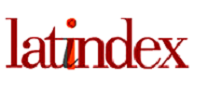Hyperion as an epistolary novel
DOI:
https://doi.org/10.5216/sig.v33.65574Keywords:
Hölderlin, Letters, BildungsromanAbstract
The goal of this article is to address the interrelation between the epistolary genre and the Bildungsroman in Hyperion, by Friedrich Hölderlin. Its features as an epistolary novel are consistent with its characteristics as a Bildungsroman, so the epistolary genre is justified. Thus, the element of intimacy, the need for an interlocutor, and the fragmentary treatment of time proper to epistolary novels are functional to the formation of the protagonist and the reader and to the handling of time inherent in Bildungsromane, respectively. This article discusses both genres (theoretically and specifically in the novel) and the abovementioned features in Hyperion.
Downloads
References
ALTMAN, Janet. Epistolarity. Approaches to a Form. Columbus: Ohio State University Press, 1982.
COCALIS, Susan. The Transformation of “Bildung” from an Image to an Ideal, Monatshefte, vol. 70, núm. 4, p. 399-414, invierno de 1978.
DILTHEY, Wilhelm. Vida y poesía. México: Fondo de Cultura Económica, 2016.
FRAANJE, Maarten. The Epistolary Novel in Eighteenth-Century Russia. Múnich: Sagner, 2001.
FRANZEL, Sean. The Politics and Media of Apostrophe in Hölderlin’s Hyperion, The German Quarterly, vol. 82, núm. 2, p.155-173, primavera de 2009.
FUERST, Norbert. Three German Novels of Education. I. Hölderlin’s “Hyperion”, Monatshefte, vol. 38, núm. 6, p. 339-347, octubre de 1946.
HOFFMEISTER, Gerhart. From Goethe’s Wilhelm Meister to anti-Meister Novels: The Romantic Novel between Tieck’s William Lovell and Hoffmann’s Kater Murr. En MAHONEY, Dennis (ed.). The Literature of German Romanticism. Nueva York: Camden House, 2004. p. 79-99.
HÖLDERLIN, Friedrich. Hiperión o el eremita en Grecia. Trad. y pról. de Jesús Munarriz Peralta. Madrid: Ediciones Hiperión, 1996.
HORLACHER, Rebekka. ¿Qué es Bildung? El eterno atractivo de un concepto difuso en la teoría de la educación alemana, Pensamiento Educativo. Revista de Investigación Educacional Latinoamericana, vol. 51, núm. 1, p. 35-45, 2014.
JOST, François. Variations of a Species: The Bildungsroman, Symposium: A Quarterly Journal in Modern Literatures, vol. 37, núm. 2, p. 125-146, diciembre de 2014.
KOVAL, Martín. Vocación y renuncia: La novela de formación alemana entre la Ilustración y la Primera Guerra Mundial. Buenos Aires: Editorial de la Facultad de Filosofía y Letras de la UBA, 2018.
MAHONEY, Dennis. The Apprenticeship of the Reader: The Bildungsroman of the “Age of Goethe”. En HARDIN, James (ed.). Reflection and Action: Essays on the Bildungsroman. Columbia: University of South Carolina Press, 1991, p. 97-117.
MILES, David. The Picaro’s Journey to the Confessional: The Changing Image of the Hero in the German Bildungsroman, Modern Language Association, vol. 89, núm. 5, p. 980-992, 1974.
REDFIELD, Marc. The Phantom Bildungsroman. En _________. Phantom Formations. Aesthetic Ideology and the Bildungsroman. Ithaca: Cornell University Press, 1996, p. 38-62.
SAMMONS, Jeffrey. The Bildungsroman for Nonspecialists: An Attempt at a Clarification. En HARDIN, James (ed.). Reflection and Action: Essays on the Bildungsroman. Columbia: University of South Carolina Press, 1991, p. 26-45.
SILZ, Walter. Hölderlin’s Hyperion. A Critical Reading. Filadelfia: University of Pennsylvania Press, 1969.
SPANG, Kurt. La novela epistolar. Un intento de definición genérica, RILCE: Revista de Filología Hispánica, vol. 16, núm. 3, p. 639-656, 2000.
STEPHENSON, Roger. The Novel in Weimar Classicism: Symbolic Form and Symbolic Pregnance. En RICHTER, Simon (ed.). The Literature of Weimar Classicism. Rochester: Camden House, 2005, p. 211-235.
SWALES, Martin. Irony and the Novel: Reflections on the German Bildungsroman. En HARDIN, James (ed.). Reflection and Action: Essays on the Bildungsroman. Columbia: University of South Carolina Press, 1991, p. 46-68.
TODOROV, Tzvetan. Literatura y significación. Barcelona: Editorial Planeta, 1971.
Downloads
Published
How to Cite
Issue
Section
License
Copyright (c) 2021 Signótica

This work is licensed under a Creative Commons Attribution-ShareAlike 4.0 International License.
Author (s) authorize Signótica to publish an article, if accepted, signing its contribution as original and not submitted to another publisher for publication. In case of acceptance and publication, Signótica's articles are Creative Comons BY-NC-ND (Attribution + Non-Commercial + Non-Derivatives)




1.png)





